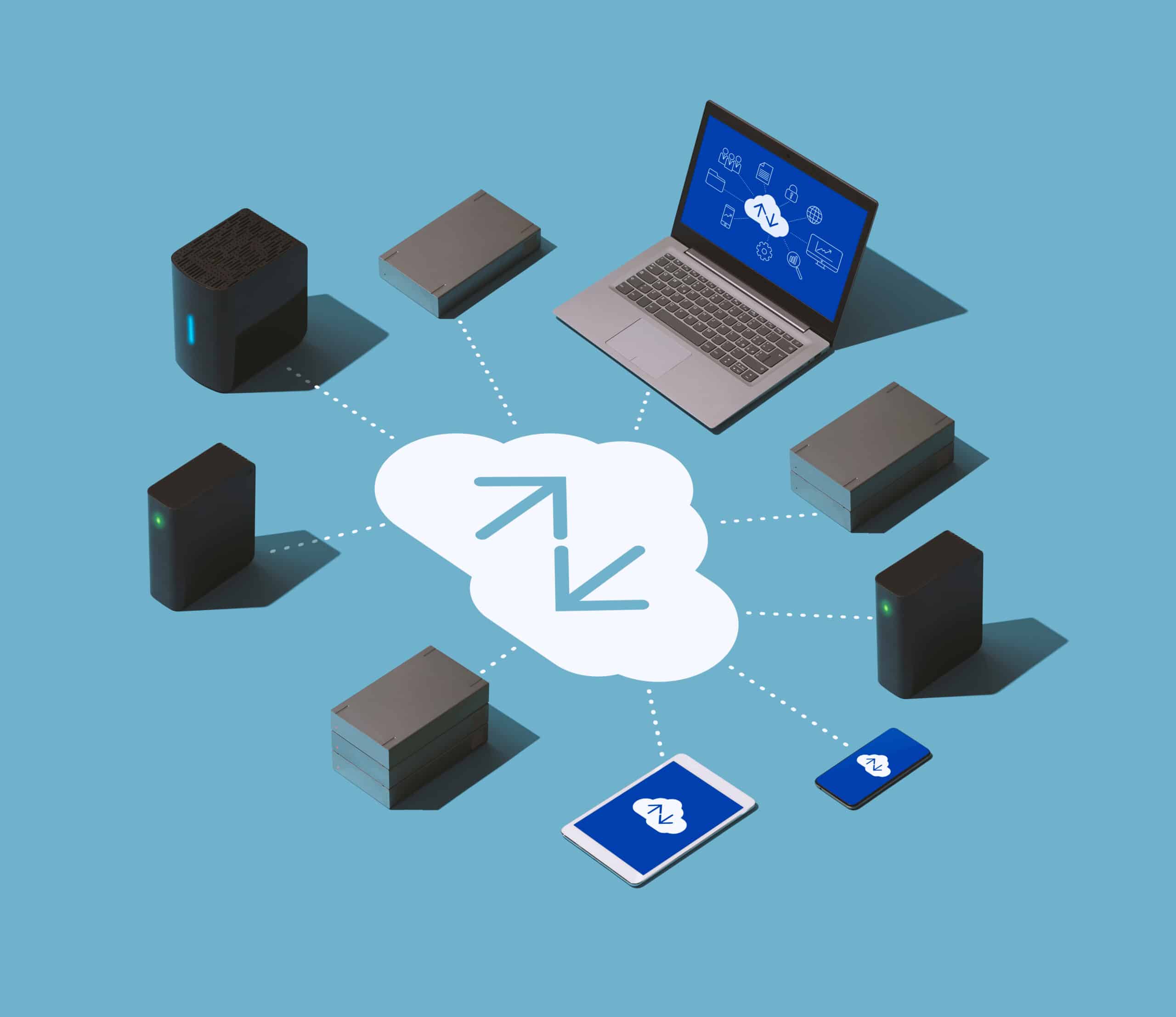Exploring the Security Benefits of Cloud Desktops for Education
In today’s fast-paced world of education, the need for secure and reliable technology has never been more important. With the growing number of cyber threats and data breaches, educational institutions are looking for solutions that can provide enhanced safety and security of student data. One such solution that has gained tremendous popularity in recent years is cloud desktops. In this article, we will explore the security benefits of cloud desktops for education, and why they are becoming an increasingly attractive option for schools and universities.
Understanding Cloud Desktops in Education
Before we delve into the security benefits of cloud desktops, it’s important to understand what they are and how they work. Simply put, cloud desktops are virtual desktops that are hosted on remote servers and accessed through the Internet. Instead of being confined to a physical computer, users can access their desktop and applications from anywhere, on any device.
What are Cloud Desktops?
Cloud desktops are a form of cloud computing, a model that allows users to access computing resources as a service. The desktop itself is hosted on a cloud server, which can be managed by either the educational institution or a third-party provider. While traditional desktops are physical computers with local software and stored files, cloud desktops are virtual and stored on remote servers.
Cloud desktops are becoming increasingly popular in educational institutions due to their flexibility and convenience. They allow students and teachers to access their desktop and applications from anywhere, which can be particularly useful for remote learning or online classes.
The Role of Cloud Desktops in Educational Institutions
Cloud desktops have numerous benefits for educational institutions. For example, they can reduce the cost of hardware and maintenance, as the desktop is hosted on remote servers. This also means that educational institutions can easily scale their computing resources up or down as needed.
Cloud desktops can also be customized to fit the unique needs of each educational institution. This includes the ability to install specific software or applications, as well as configuring security settings.
Comparing Traditional Desktops and Cloud Desktops
When it comes to security, there are several key differences between traditional desktops and cloud desktops. With traditional desktops, data is stored locally, which means that if the computer is lost or stolen, the data can be easily accessed by unauthorized users. Additionally, traditional desktops are more prone to malware and other security vulnerabilities.
On the other hand, cloud desktops offer enhanced security features, such as secure login and password protection, data encryption, and regular security updates. Additionally, because the desktop is stored on remote servers, the risk of data loss or theft is significantly reduced.
Another advantage of cloud desktops is that they are more environmentally-friendly than traditional desktops. This is because cloud servers are optimized for energy efficiency, meaning that they use less power and produce less carbon emissions than physical computers.
In conclusion, cloud desktops offer numerous benefits for educational institutions, including flexibility, convenience, scalability, customization, and enhanced security features. As technology continues to evolve, it’s likely that we’ll see more and more educational institutions adopting them as a way to provide better learning experiences for their students and teachers.
Key Security Advantages of Cloud Desktops
Cloud desktops are becoming increasingly popular in educational institutions due to their numerous benefits, including enhanced security features. In this article, we will explore some of the key security advantages of cloud desktops and why they are a smart choice for educational institutions.
Enhanced Data Protection
One of the biggest advantages of cloud desktops is enhanced data protection. With traditional desktops, data is stored locally, which means that if the computer is lost or stolen, the data can be easily accessed by unauthorized users. However, with cloud desktops, data is stored on remote servers, which typically offer advanced security features such as encryption, access control, and monitoring. This means that even if a device is lost or stolen, the data remains secure and inaccessible to unauthorized users.
Moreover, cloud desktop providers often have dedicated security teams that monitor the servers 24/7, ensuring that any potential security threats are detected and dealt with promptly. This level of security is difficult to achieve with traditional desktops, which often rely on individual users to take security measures.
Improved Access Control
Another key security advantage of cloud desktops is improved access control. With traditional desktops, access is typically limited to the physical location of the computer. However, with cloud desktops, users can access their desktop and applications from anywhere, on any device. This means that access can be monitored and controlled more effectively.
Cloud desktop providers often offer granular access controls, allowing administrators to set specific permissions for different users or groups. This means that sensitive data can be protected from unauthorized access, while still allowing users to access the applications and data they need to do their work.
Regular Security Updates and Patches
Cloud desktop providers typically offer regular security updates and patches, which can help prevent security vulnerabilities and cyber-attacks. This is particularly important for educational institutions, which may be targeted by hackers seeking to access sensitive student data.
By using cloud desktops, educational institutions can ensure that their systems are always up to date with the latest security patches and updates, reducing the risk of security breaches and data loss.
Reduced Risk of Data Loss and Theft
One of the biggest risks facing educational institutions is data loss and theft. With cloud desktops, data is stored on remote servers, which means that it is less vulnerable to physical damage or theft. Additionally, because data is backed up and stored in multiple locations, the risk of permanent data loss is significantly reduced.
Cloud desktop providers often have disaster recovery plans in place, ensuring that data can be restored quickly in the event of a disaster or system failure. This means that educational institutions can be confident that their data is secure and always accessible, even in the event of a major incident.
Security Advantages
Cloud desktops offer numerous security advantages over traditional desktops, making them an excellent choice for educational institutions. By using cloud desktops, educational institutions can enhance data protection, improve access control, receive regular security updates and patches, and reduce the risk of data loss and theft. With these benefits, it is no wonder that more and more educational institutions are turning to cloud desktops to meet their computing needs.
Zero Trust Virtual Desktop White Paper

Compliance and Regulatory Benefits
Cloud desktops have become increasingly popular in educational institutions due to their numerous benefits. In addition to providing a flexible and cost-effective solution for delivering desktops to students, cloud desktops can also help educational institutions meet data privacy standards and ensure compliance with regulations such as the General Data Protection Regulation (GDPR) and the Family Educational Rights and Privacy Act (FERPA).
Meeting Data Privacy Standards
One of the key advantages of cloud desktops is that they can help educational institutions meet data privacy standards. With cloud desktops, data is stored on remote servers, which typically offer high levels of security and encryption. This means that student data is protected from unauthorized access and can only be accessed by authorized personnel. Additionally, cloud desktop providers are often required to comply with strict data privacy regulations, which means that educational institutions can be confident that their student data is being stored and managed in a compliant manner.
Furthermore, cloud desktops provide educational institutions with the ability to control access to student data. Access can be restricted to authorized personnel only, ensuring that sensitive information is not accessed by unauthorized individuals. This is particularly important for educational institutions that handle sensitive data such as student health records.
Ensuring FERPA Compliance
FERPA is a federal law that protects the privacy of student education records. With cloud desktops, educational institutions can ensure that they are complying with FERPA regulations by storing student data on secure remote servers. Additionally, cloud desktop providers typically offer features such as access control, user authentication, and data encryption, all of which can help educational institutions meet FERPA requirements.
Cloud desktops also provide educational institutions with the ability to monitor and audit access to student data. This means that educational institutions can track who has accessed student data and when, ensuring that they are able to identify any potential breaches of privacy.
Simplifying Audits and Reporting
Cloud desktops can also help simplify audits and reporting. With traditional desktops, it can be difficult to track and monitor student data, which can make audits and reporting more challenging. However, with cloud desktops, data is stored on remote servers, which can be easily monitored and audited. Additionally, cloud desktop providers often offer reporting and monitoring tools, which can help educational institutions track and report on student data more effectively.
Cloud desktops also provide educational institutions with the ability to generate reports on student data quickly and easily. This means that educational institutions can quickly respond to requests for information from parents, students, and regulatory bodies.
In conclusion, cloud desktops offer numerous benefits to educational institutions, including the ability to meet data privacy standards, ensure compliance with regulations such as FERPA, and simplify audits and reporting. By adopting cloud desktops, educational institutions can provide a secure and compliant environment for student data, while also benefiting from the flexibility and cost-effectiveness of cloud computing.
Streamlining IT Management and Support
Centralized Management and Monitoring
Cloud desktops offer centralized management and monitoring, which can simplify IT management and support. With traditional desktops, IT staff must manually install and update software on each computer, which can be time-consuming and labor-intensive. However, with cloud desktops, software can be deployed and updated centrally, which saves time and reduces the risk of errors. Additionally, cloud desktop providers typically offer monitoring and management tools, which can help IT staff detect and resolve issues more quickly.
Simplified Software Deployment and Updates
Another advantage of cloud desktops is simplified software deployment and updates. With traditional desktops, software updates must be installed on each individual computer, which can be time-consuming and prone to errors. However, with cloud desktops, software can be deployed and updated centrally, which saves time and reduces the risk of errors. Additionally, because software is deployed and updated centrally, educational institutions can ensure that all computers are running the latest software, which can help prevent security vulnerabilities and other issues.
Reduced Hardware and Maintenance Costs
Finally, cloud desktops can help reduce hardware and maintenance costs. With traditional desktops, educational institutions must purchase and maintain separate computers for each user, which can be expensive and time-consuming. Additionally, maintaining and repairing traditional desktops can be time-consuming and labor-intensive. However, with cloud desktops, educational institutions can reduce hardware costs by using cheaper and more reliable thin-client devices. Additionally, because the desktops are hosted on remote servers, maintenance and repairs are often handled by the cloud desktop provider, which can reduce IT staff workload and costs.
Conclusion
Cloud desktops offer numerous benefits for educational institutions, including enhanced security, compliance with data privacy regulations, and streamlined IT management and support. While traditional desktops offer some advantages, they are becoming increasingly outdated in today’s fast-paced world of education. By adopting cloud desktops, educational institutions can ensure that they are providing their students and staff with the latest technology, while also protecting their data from cyber threats and other security vulnerabilities.


